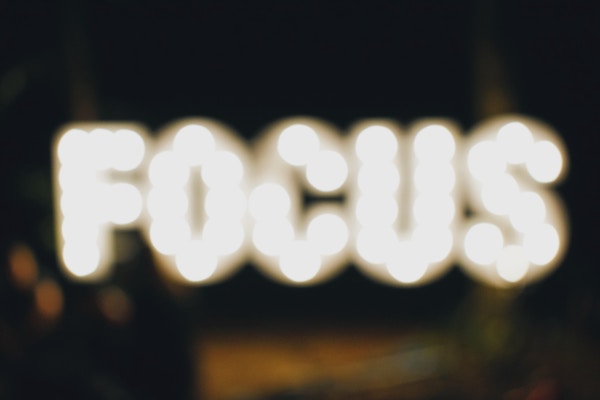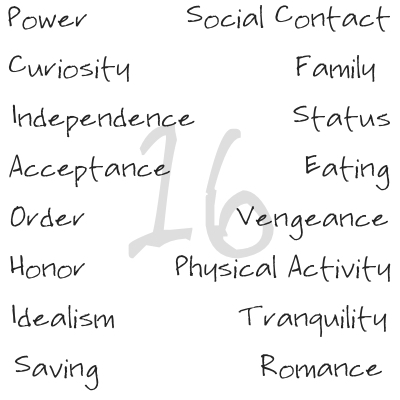
by Sandy | Jun 25, 2018 | Other Personality Assessments, Reiss Motivation Profile
Why am I talking about “desire” on a blog that has much of its content to be dedicated to the MBTI?
Personality assessments are tools. The way I like to use them – they are tools to use as a lens to open a conversation or inquiry. The purpose of the exploration being gaining knowledge of self or others. And as the old adage goes a “Woman is only as good as her tools.” If she has only one tool she is limited in what gets built. To continue with the cliches “if you only have a hammer everything becomes a nail.”
Hence, my passion for knowing multiple assessment tools. When I have multiple lenses the look through I see aspects that aren’t illuminates by just one facet of the prism. I have picked three tools to focus on that work for me: the MBTI for understanding how we process information and make decisions, the Enneagram for a deeper look at worlview and the resulting dynamics and the Reiss Desire Profile for exploring core motivation. Some of the others that I am familiar with and recomment for different circumstances include the Kolbe, the DISC, the PIAV and of course other type and tempaerament tools such as Insights, True Colors and the Kiersey Temperament Sorter.
What is the Reiss?
The Reiss Profile is a comprehensive, standardized, objectively validated instrument that assesses 16 basic psychological needs. This knowledge build on work by Maslow and Allport but one differentiator is that Reiss’s work is testable. Dr. Steven Reiss research included over 10,000 surveys with ordinary people across a wide spectrum of life situations. He mathematically reduced hundreds of wants, needs and desires down to be captured by these 16 desires.
Every individual has some proportion of all 16 basic needs. Dr. Reiss was looking to understand values based happiness. What he discovered is that how a person prioritizes the 16 needs can predict their behaviour…whether the person will be an organ donor, how they will respond in school, in romantic situations or with regard to religion.
This profile is a trait based model so that rather than discovering your type, you being to see a constellation of which traits apply to you and which do not.
The 16 basic psychological needs are:
Power, the need for influence of will
Independence, the need for individuality
Curiosity, the need to think
Acceptance, the need for approval
Order, the need for organized, stable, predictable environments
Saving, the need to collect
Honour, the need to be loyal to the traditional values of one’s clan
Idealism, the need for social justice
Social Contact, the need for friends (peer relationships)
Family, the need to raise children
Status, the need for social standing/importance
Vengeance, the need to strike back
Romance, the need for sex
Eating, the need for food
Physical Activity, the need for exercise
Tranquility, the need to be safe
Inner Landscapes looks at a few of these desires in more detail. It may spark your interest to see how this profile might apply to you and your business.

by Sandy | Jun 17, 2018 | Reiss Motivation Profile
Speaking of the Reiss
A desire in the Reiss Desire profile is synonymous with motive – a reason to instigate behaviour. Aristotle first instructed us that motives are divided into ends and means. Means are the steps that we take for getting what we want. They are motivating in that they lead to something else and they cease to be motivating once that end result is achieved.
What we are talking about in the Reiss are end motives. No matter how often or completely they are achieved they continue to be motivating. Take curiosity for example and you can easily see that learning begets the desire for more learning.
What contributes to individuality
Although everybody embraces the 16 basic desires, individuals prioritize them differently. The Reiss Profile is a summary of person’s rankings of the 16 basic desires which for them are strong and which are weak. Generally, at the two ends of the spectrum are the desires that contribute the most to explaining a person’s behaviour. Those basic desires that are neither strong nor weak are less important in explaining a person’s motivation.
Attention matters
Our behaviour makes sense when we understand how our desires (our motives) organize our attention: thoughts, feelings and actions into a coherent whole. We pay attention to stimuli that are relevant to the satisfaction of our desires, and we tend to ignore stimuli that do not satisfy our desires. For instance, a person with high desire for order will automatically pay attention to how neat and clean workspaces are. On the other hand, a person with a low desire for order may not even be aware that things are chaotic as their attention is elsewhere. One is not better than another in and of themselves but may seem so especially in certain work situations.
Some examples at work
You can see the list of all 16 desires but let’s consider how you make use of this information in looking at how you do your work. If the job that you are doing does not line up with your Reiss motivational profile, you can work on how you design your workflow or design a strategy to have that need met elsewhere. People with a high need for physical activity can get that need met by extra-curricular activities such as classes, sports teams and vacation opportuities.
John Gray was a few months short of a PHd in Kinesiology when he recognized that a life of research or teaching was not for him. He likes to be active. Now he sees his own roster of clients, heads the fitness section of a private club and still has many opportunities to continue his passion for learning through specialized courses that he is taking in Europe and the teaching he is doing as a guest university lecturer.
Idealism is the need for Social Justice. On my recent trip to visit my daughter in Victoria British Columbia I met a number of people who had a high need for Social Justice – social workers, lawyers, therapists, organic gardeners and researchers. What I came away with was no matter what work those with a high need for Social Justice were doing they had Social Justice as a filter that operated in their life. Linda Lundstrom is a Canadian fashion icon. She is devoted to Indigenous issues and promotes Indigenous artists in her designs. In addition all contributions from her speaking engagements go toward the Kiishik fund that she established to create awareness of First Nations in the classrooms and communities of the Red Lake District.
In my case the more time I spend looking through the lens of the Reiss I realize just how much the twin motivators of low honour and high independence play a strong role in all things big and small in my life. Honour is the need to be loyal to the traditional values of one’s clan and I don’t have this at all. What I have is the need for expediencey which is how a low need for honour shows up. What this means is that I don’t think to ask for help and anything that I do I want to do it in the fewest steps possible to get a satisfactory result. What this means is that I know I would not do well working in a bank and that I work well on projects where each person has their specified role and I can do my part rather independently.
You can learn more by buying:
1. Dr Reiss’s book “Who am I?”
2.A digital download of my first Inner Landscapes show and guide that has an explanation of the Reiss Desires plus 24 paintings that illustrate these traits and a sample Reiss Profile.
3. The Reiss Profile online.

by Sandy | Jun 6, 2018 | Reiss Motivation Profile
The Reiss Desire Profile can be taken as an online assessment that results in a report that looks at 16 core motivational tendencies. (For an overview of the research behind this profile and a brief description of the 16 desires have a quick look here)
There are several things to remember when taking an assessment tool:
- Perhaps the number one thing to keep in mind is that this is a TOOL and it’s value lies in how you work with it
- Before diving in to apply what is in the report take time upfront to see if the results match with what you know to be true. Does this seem an accurate reflection of who you are?
- What does not fit that you might want to pay attention to?
- What aspect did you expect to see reflected that isn’t showing in the results?
- Take time to compare the results to what is happening now and in the past – “In reflecting on my life and work can I see how what this profile says applies”.
- You get out of these personality tools the investment that you make in understanding and applying them. A superficial “one -time” read through your profile may well be soon forgotten. Returning to reflect trough the lens of the tool deepens your understanding.
- A coach or facilitator trained in that assessment tool will help you to know how to interpret the tool accurately and make the most of applying your knowledge to your work/life reality.
There are also some things that are specific to the Reiss:
- The motivational tendencies that you score either highly on or have a low score (those in the green and red zones) will have the greatest influence
- Those desires that are in the mid-range (yellow) will be neutral
- The desires in the green or red range will reflect things that you will motivate you time after time
- Satisfying these needs (desires) once will not be the end of their influence
- They do not need to be satisfied in your current work or relationships but can be factored in in other ways.
Some examples of application:
Acceptance can be a particularly challenging motivator. Most work situations are not designed to satisfy this desire and may in fact be quite the opposite by requiring a level of detachment and sacrifice of personal concerns. There are groups such as Toppers which is a weight loss program, Mary Kay Cosmetics and some social or special interest groups where recognition is an integral part of the program. A job that comes up short in satisfying the need for acceptance can be balanced by engaging with a group that has affiliative roots and provides Acceptance as part of how they operate.
On a personal note I have come to see how much Expediency plays a role in my decision making. This is the opposite of having High Honour as a motivator. A person motivated by High Honour will be motivated by what’s traditional, what brings in and respects the tried and true approaches. I am consistently motivated to get things done in the most efficient and effective way possible regardless of tradition. I am the Queen of finding ways to reduce 3 step processes to “let’s try this to see if we can get it done in ONE.” Does it backfire? Sometimes. Does that ever stop me from wanting to find the most expedient way? No Never… this particular desire is a double edged sword at times -being both a blessing and a curse. There are a number of jobs in government and other institutions that value High Honour concerns that would be a motivational challenge for me.
Someone with High Physical Activity might want to design some reoccurring exercise or sports activities into their week. In addition they might want to look at how they function at work. A stand up desk or hourly breaks to stand and move around can contribute. Some organizations have a culture that may be more in alignment : sponsoring in house teams and supporting gym memberships.
You can look for a work situation that matches your motivational profile in some important ways. You can also design how you operate in an existing work situation. The important part of this is to use the information to help increase alignment of who you are with what you do.

by Sandy | May 29, 2018 | Reiss Motivation Profile
Every individual has some proportion of all 16 basic needs described in the Reiss Desire Profile which you can see here.
Each person person will have a high desire for some traits, others traits will be on the low end and some will be in the neutral mid-zone. The places where we share a high desire for a specific trait or traits with another person will typically be a bonding experience. For example, people with a high desire for status will seek out environments that support this desire and other people who share this sensitivity… think Conde Nast and a building full of people dressed in black.
On the other hand when people are on either end of the spectrum on the same trait, they may experience conflict. Imagine someone with a high need for saving in relationship with someone who spends freely. This can provide challenges both personally and in the workplace.
My husband has a high need for physical activity. His idea of a good day might include 36 holes on two challenging golf courses, a curling bonspiel (Canadian eh!) or volunteering to dig, cement and instal water cachement systems in Guatemala. My idea of a great day is hearing all about it over a glass of wine at dinner. We have been able to work this particular conflict out especially since we both have a high need for independence and we both enjoy dinner.
Other discrepancies have created greater challenges for me. I have a high need for acceptance which is a challenge for many people in the workplace. If a person with a low need for acceptance doesn’t have a modicum of awareness this can be a challenge. They might not care what others think of them – if THEY are okay with things they can go ahead. What others think may not even be on their radar screen. Some industries like the film industry also call for a certain thick skin. If you take things personally in this high pressure environment, you may not last very long.
I have learned over the years that I work best with others who are expedient. If someone has a high need for honour and needs to follow the traditions of the way things were done step by step, I am not the best business partner for them. I want to get on with it – move things forward – rock and roll. (Oops getting carried away here). I am the Queen of the lazy man’s load – pile thing up to make one trip even when 3 may be required -I am not proud of it but accept that this is typically my modus operandi.
You cannot change a person’s desires or negotiate them out of it. You can’t explain it with the hopes of changing another. You can agree to disagree. You can accept that the other person is different and build on the areas of commonality. The traits that you both rank in the neutral area do not have the same impact on the quality of the relationship.
Knowing who you are – accepting yourself – being transparent with others – accepting them and making clear agreements about areas of difference provide 5 steps toward healthy relationships.

by Sandy | Mar 12, 2018 | Reiss Motivation Profile
Do you know what your needs are?
I’ll be you haven’t really consciously thought about this question recently. Of course Maslow has put them into a hierarchy for us, starting with the basics of food, shelter and ending with self-actualizing needs. But I will wager that other than our daily cave man like morning mantra “need coffee now” or monthly whine “really ought to hit the gym” most of us don’t pay attention to our needs.
What happens when a particular need goes unmet?
Ahhhh…hhhaaaa Unmet needs make themselves known. If you don’t notice your discomfort, your cranky mood, then perhaps someone close will be kind enough to point it out to you. They may ask “What’s wrong?” “You don’t seem to be yourself?” It may be as subtle as a lacklustre feeling seeping into everything, or something feeling “off”.
How can you really know what your needs are?
Here’s a scenario that you might know well. You think that you need a bigger, better car, house, job, city etc. and then you will be happy. You might recognize this syndrome in others when you listen to them complain.
Some of us might actually be able to become the kind of excellent observers of our behaviour that allows us to suss out our true needs which most likely aren’t the kind that are satisfied by a new house. For the rest of us looking at the Reiss Desire Profile can be enlightening. This assessment is a comprehensive, standardized, objectively validated instrument that assesses 16 basic psychological needs. Fourteen of these needs or desires are based on animal behaviour; for example, power, independence and curiosity can all be found when studying the animal world.
Who is responsible for my needs?
The simple (yet not so simple) answer is… you are. Here’s an example of the not so simple answer. One of the most challenging needs, if it applies to you, is the need for Acceptance. Before you think that we all have that particular need, the truth is …. we don’t. Some people honestly could care less what you think about them. Not in a mean way – it simply isn’t on their radar screen.
If you have a need like this and expect that because you give it to a particular person or even a job that there is an automatic quid pro quo return due to you, you may be sadly mistaken. In addition it is not necessary. You need to be responsible for getting your need met but if you realize that you can get it met in many ways you can design a solution that works. In the case of Acceptance, there are organizations that value this need – overtly acknowledging this by giving awards and having recognition dinners. Volunteering or working with individuals or organizations that help meet this need takes the pressure off expecting to find it in all the wrong places. Dog owners often boast that they receive unconditional love and acceptance from their pet. Suggesting that a pet can make a difference may seem at first like a trite response – I’m not certain that it is.
So what?
Pay attention to your moods, your feeling of well being. Our emotions and our bodies are great sources of information for us if we pay attention.
If you aren’t sure what needs aren’t being met or what needs are being stepped on or what you are ignoring, look at a needs based tool such as the Reiss Desire Profile.
Take action into your own hands and make a plan to get your needs met. This is not a one time affair. Meeting your needs once does not make them go away. They drive your behaviour whether you are paying attention or not.

by Sandy | Mar 7, 2018 | Reiss Motivation Profile
People that like to think over-complicate things because it gives them more to think about.
This isn’t a direct quote but it comes close to the words Dr. Steve Reiss, Professor of Psychology, used during his recent presentation in Chicago on his research on motivation. He turns previous models of motivation on their head. Reiss claims that motivation is a lot clearer and more direct than theorists have proposed. He further claims that emotions are not what motivates behaviour. Reiss has researched and scientifically validated 16 motives that are universal and encompass all aspects of needs, wants, values and desires.
In an article in “Psychology Today” Reiss explains:
I consider motives as goals, and motivation as the assertion of values. I pay some attention to emotions as indicators of whether or not motives are satisfied, but I don’t view emotions as motivational.
In the case of people who like to think, the motive has been labelled by Reiss as “intellectual curiosity”. He goes on to add that “the goal of curiosity is understanding; the emotion is wonder; and the value are ideas.”
Motivation Applied
One distinction of Reiss’s work on motivation is that he has married his findings to various applications such as sports motivation, school, advertising and relationships. In a school setting, a person who is motivated by curiosity will seek multiple ways to find understanding. They will feel at home amongst books such as a library environment, they will buy and read books, they will explore ideas through research or on the internet. Satisfying their curiosity in one area will only spark more curiosity and more desire to understand. This motivation does not apply to every student. Someone who is motivated by Power may learn to receive awards.
Reiss tells us that the emotion of wonder does not play a role in predicting the behaviour of a person motivated by curiosity but that we need to look at the value they have for ideas and how they assert that value will give us an idea of their behaviour. Put them in an environment where things are done by rote and opportunities to explore ideas and think are restricted and the emotions associated with boredom, frustration and anger will indicate that the value is being thwarted. They may also not care about receiving recognition in the form of awards or money for learning.
Many people talk about emotion as an end goal…”I just want to be happy.” What gives one person happiness will not match another person’s motivational profile. When considering the role of emotion, observe that the emotion is an indicator of whether a person’s is fulfilling their desires or values or not. This will tell you what you need to know to motivate them. Don’t complicate it -it is that simple.






